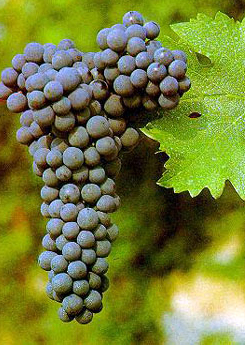 |
Cabernet Sauvignon Cabernet Sauvignon, often referred to as the “King of Red Wine Grapes,” originally from Bordeaux, with a substantial foothold in California’s wine races, has the privilege of being the world’s most sought after red wine. In the past century, Cabernet Sauvignon has enjoyed its popularity as one of the noble grapes in the world of wine. Built partially on its historical success in Bordeaux as well as New World wine regions like California and Australia, planting the grape is considered a solid choice in any wine region that is warm enough to cultivate it. Among consumers Cabernet has become a familiar wine which has aided in its accessibility and appeal even from obscure wine regions and producers. In the 1980s, the Bulgarian wine industry was largely driven and introduced to the international wine market by the success of its Cabernet Sauvignon wines. The widespread popularity of Bordeaux has contributed to criticism of the grape variety for its role as a "colonizer" grape, being planted in new and emerging wine regions at the expense of focus on the unique local grape varieties. Some regions, such as Portugal with its abundance of native grape varieties, have largely ignored Cabernet Sauvignon as it seeks to rejuvenate its wine industry beyond Port production. Cabernet Sauvignon grapes tend to favour warmer climates and are often an ideal wine for aging, with 5-10 years being optimal for the maturation process to peak. Fondly called Cabs, they take a bit longer to reach maturation, allowing their flavours to tone down. They are ideal candidates for blending with other grapes, primarily Merlot. This blending softens the Cabernet, adding appealing fruit tones, without sacrificing its innate character. Flavour Profile Cabernet Sauvignon is a very bold and assertive wine that has potential to overwhelm light and delicate dishes. The wine's high tannin content as well as the oak influences and high alcohol levels associated with many regional styles play important roles in influencing how well the wine matches with different foods. When Cabernet Sauvignon is young, all those elements are at their peak, but as the wine ages it mellows; possibilities for different food pairings open up. In most circumstances, matching the weight (alcohol level and body) of the wine to the heaviness of the food is an important consideration. Milder spices, such as black pepper, pair better due to their ability to minimize the perception of tannins—such as in the classic pairings of Cabernet Sauvignon with steak au poivre and pepper-crusted ahi una.[3] Cabs range from medium-bodied to full-bodied and are characterized by their high tannin content which serve to provide structure and intrigue while supporting a rich, ripe berry, tobacco and sometimes green pepper flavour. Food Pairings: red meats, flavourful and heartier (red) pastas, lamb, strong-flavoured cheese, and chocolates (especially dark). |
|
||||||||||

